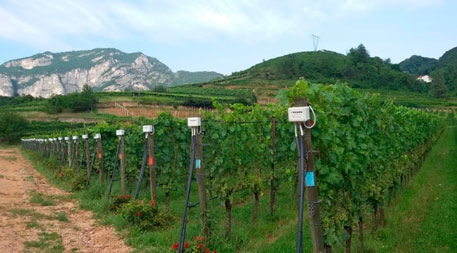Grape farmers commonly protect crops from insects by repeatedly applying broad-spectrum chemical pesticides.
An alternative approach is to use traps laced with highly specific insect-attracting scents called pheromones that lure pests into killing chambers. But not all insects have the chemical receptors necessary to respond to pheromones, so a gap in pest management remains.
Vibrational mating disruption (cont from last issue)
Valerio Mazzoni, a research scientist in agricultural entomology at Edmund Mach Foundation of San Michele all’Adige and other researchers are exploiting leafhoppers’ vibrational communication channels to stop them from spreading.
They run controlled lab experiments and field trials to capture the frequencies and amplitudes of vibrations produced between male and female pairs.
Then they use digital electronic shakers about the size of your fist to emit vibrations back to determine which signals are ideal for disrupting leafhoppers’ ‘sweet nothings’.
“We are finding weak-links in their communication system, and those are the places that we go into and interfere,” says Rodrigo Krugner, a research entomologist with the USDA–Agricultural Research Service in Parlier, California, who is working on vibrational mating disruption.
The male–female duet is a major element in the whole mating process and happens to be very vulnerable to disruption.
The researchers use aggressive signals that Krugner describes as “mimicking shouting matches” between rival males or continuously overlapping female signals to disrupt the duet and suppress the male leafhopper’s ability to identify, locate and ultimately mate with the female.
Vibrational mating disruption is a product of a little bit of technology and a lot of research on insect behaviour.
The researchers use a laser doppler vibrometer to detect and record vibrations, while a prototype shaker called TREMOS sends the vibrations through plants.
(cont next issue.)
See this article in Tree Fruit Oct 2018




















